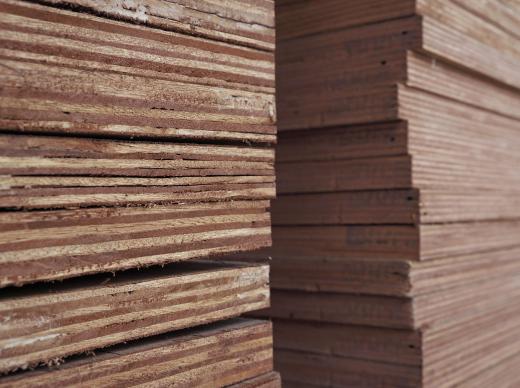Concrete shuttering is the process of creating molds into which concrete can be poured to create finished concrete structures. The process of concrete shuttering usually involves the process of creating temporary structures and supports, though in some cases these structures and supports may be permanent. Plywood is a common material used for shuttering, and the plywood boards are supported by other pieces of wood or metal known as falsework. Metal plates can also be used for shuttering, though wood is often used to cut costs and to ease the process of creating the shuttering quickly and effectively.
The plywood used for concrete shuttering must be treated properly; most plywood sheets are water resistant to avoid warping, cracking, and rot while they are in place and supporting concrete. Broad sheets of plywood are usually used to create a flat, smooth surface once the concrete has set. Plywood can be manipulated or cut easily to create various shapes, thereby making it a versatile material for concrete shuttering. In some cases, the plywood can be reused as long as it is not damaged during the shuttering process. The plywood must be stored in a cool, dry location, and the sheets must be cleaned thoroughly after use.

Roadform is another type of concrete shuttering commonly used in the concrete pouring process. Roadform is generally made of steel and will come in long sections that can be stacked on top of each other and secured in place using steel falsework spikes. These plates are easy to set up, extremely durable, rigid, and convenient to use. They can be more expensive than plywood forms, however, and the metal roadform can be very heavy and cumbersome. Transporting roadform can be problematic, as projects may require a high number of forms that can weigh a significant amount when loaded onto a trailer or in a truck bed.

The main job of any type of concrete shuttering is to hold the viscous concrete in place as it sets, or dries. This means the formwork cannot have any gaps through which the concrete can leak during the setting process. This can lead to an uneven finished structure or air gaps in the concrete. The concrete shuttering panels must often therefore be sunk into the ground to prevent the viscous concrete from leaking out of the bottom of the formwork. If the panels cannot be sunk into the ground, they will need to be weighted or otherwise secured in such a way that concrete will not escape through the bottom.
